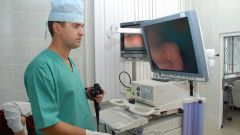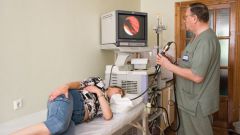Instruction
1
Experienced and qualified specialist-a gastroenterologist are able to supply the preliminary diagnosis already during the first conversation with the patient. Focusing on the nature of complaints and after studying the symptoms, the doctor determines what disease was their cause. Additional information it may acquire in the examination of the patient by sensing the stomach. Pressing and feeling it through the abdominal wall, the doctor will conclude whether tumor masses or gryzenia channels in a patient.
2
For more detailed surveys doctors use a probe located at the end of a thin, flexible tube. Being swallowed, the probe enters the esophagus and slowly moves it towards the stomach. Using the probe can be introduced nutrient, once in the stomach, forcing him to work. Samples of gastric juice are taken via the probe.
3
The level of acidity in the stomach is determined not only by sensing, it can be checked in another way. For this, the patient swallows a special substance containing chemical safe dye. After processing in the stomach, the dye is excreted along with the urine. A urine test will determine the acidity – the more dye is left in the urine, the higher level of acidity.
4
There is a special electronic sensor, which also can determine the level of acidity. It should be swallowed, and once in the stomach, it will emit signals whose frequency depends on the level of acidity. The body of the sensor comes out naturally.
5
One of the most reliable methods that allow the physician to literally "see" the condition of the stomach from the inside, is endoscopy. It can help to diagnose tumors and ulcers. The process of movement of an endoscope through the esophagus and stomach can be seen on the monitor screen.
6
A popular method for the diagnosis of gastric diseases is ultrasound. It allows very detailed examination of this body, painlessly and in a timely manner to carry out its diagnostics.




